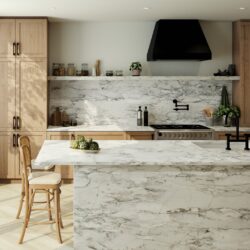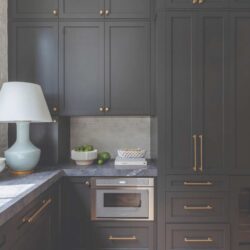08/12/2025 • Trends
In the last issue of our Counter Solutions newsletter, we asked readers to share how they manage indecisive clients.
The results were a little surprising. We expected more designers to report frequent issues with client indecision. However, those who responded emphasized how essential communication is throughout the process. It seems that by setting expectations early and maintaining regular updates, many designers prevent indecision from becoming a major problem.
When asked, “What’s your go-to strategy for managing mid-project changes?”, respondents were given four options:
- Build in extra time and budget from the start
- Limit the number of revisions allowed
- Charge additional fees for changes
- Increase communication/check-ins to align early
A remarkable 80% selected “Increase communication/check-ins to align early.”
“Communication is key!” said Rebecca McNett of Advance Cabinetry. “Updating the client throughout the process and progress is so important.”
The message is clear: open, consistent communication is the most effective tool for managing indecisive clients.
Below are several best practices to help keep projects, and clients, on track.
1. Start with Empathy and Understanding
- Acknowledge their hesitation. Kitchen remodels are major emotional and financial investments. Validating clients’ concerns builds trust.
- Ask open-ended questions to uncover the “why” behind their indecision. Often, uncertainty isn’t about the product itself but about how it fits their lifestyle.
2. Set Clear Expectations Early
- Outline the design process from the start, including timelines, number of revisions, and key decision milestones.
- Put everything in writing. Follow up meetings with recap emails confirming what was discussed and what comes next.
“I always write everything down and have them sign a contract before ordering.”
— Designer, DeWitt Lumber
3. Establish a Decision-Making Framework
- Break choices into smaller steps. Instead of asking clients to approve an entire design at once, guide them through in stages: layout → cabinetry → finishes → fixtures.
- Limit options. Too many choices can create paralysis. Present 2–3 curated options that best align with their goals.
- Use visuals. Mood boards, 3D renderings, or material samples help clients see what they’re choosing and build confidence.
“I use mood boards, samples and design renderings to help document clients’ approvals along the way.”
— Kristi Trumble, Trumble Flooring
4. Use Active Listening and Reflective Language
- Repeat back what you heard. For example: “So it sounds like you love the warmth of wood but are worried it might feel too dark; is that right?”
- This confirms understanding and helps clients feel heard, reducing second-guessing later.
5. Build in Checkpoints for Reassurance
- Provide regular updates, even brief ones, to keep clients engaged and reduce anxiety between major decisions.
- Celebrate progress. “Countertops are finalized; one big step closer to your dream kitchen!”
6. Manage Emotional Triggers
- Recognize when indecision is emotional. Fear of regret or budget concerns often fuel hesitation. Slow the conversation and provide reassurance when needed.
- Avoid technical overload. Translate design jargon into practical, everyday benefits.
7. Maintain Confidence and Professional Boundaries
- Project confidence. Clients often mirror your energy. If you sound uncertain, they will too.
- Be the guide, not just the service provider. Offer recommendations with assurance based on your professional expertise
8. End Each Interaction with Clarity
- Recap each conversation. Confirm what’s been decided and what’s next.
- Send written or visual confirmations to prevent confusion or backtracking later.
“When it is time to close, put down deposits and place orders, the client completes forms, signs off on layouts and acknowledges that all special orders are non-refundable.”
— Designer, Mortimer Lumber
9. Follow Up Post-Installation
- Check in after completion. A quick follow-up reinforces trust, ensures satisfaction, and often leads to referrals or repeat projects.
In Closing
Communication isn’t just about talking, it’s about creating clarity, confidence, and calm for clients who may feel overwhelmed by decisions. When designers communicate proactively, they turn uncertainty into collaboration, and indecisive clients into satisfied ones.






